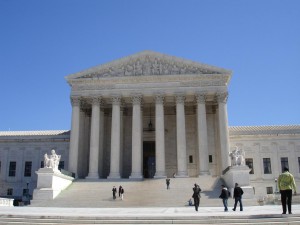Author: Jarod Bona
It isn’t easy to be an indirect purchaser antitrust class action plaintiff.
Not only do you have to satisfy the difficult standards for class certification (discussed here), but you also have to prove that the direct purchasers passed on an overcharge from defendants’ alleged anticompetitive conduct.
Before we go further, let’s talk about how direct purchasers and indirect purchasers fit into antitrust class action cases.
Direct Purchasers, Indirect Purchasers, Class Actions, and Overcharges
The most common type of antitrust class actions involve allegations of price-fixing or some other per se antitrust violation that leads to higher prices than the but-for world without the anticompetitive conduct. The increase in prices from the antitrust violation is called the overcharge.
The “overcharge,” of course, isn’t real—it is a number that one or more economists create after combining equations with lots of data and a bunch of assumptions that may or may not be accurate. Everyone does their best and a judge or jury has to sort through it and try to figure out what is right.
Anyway, a “direct purchaser” is a person or entity that purchased products or services from one or more defendants that were accused of violating the antitrust laws. They usually have standing to sue under the federal antitrust laws because, if the allegations are true, they paid higher amounts than they should have for their purchase.
But sometimes these direct purchasers are not end users of the product. Instead, they may be, for example, distributors or retailers that purchaser the product from defendants and resell it to someone else. That someone else is what is called an “indirect purchaser.”
For reasons I won’t get into now, indirect purchasers usually don’t have standing to sue for damages under the federal antitrust laws (Illinois Brick). But many states allow indirect purchasers to obtain antitrust damages under their state antitrust laws.
So when something happens and there is an antitrust blizzard of antitrust complaints filed throughout the country, direct purchasers will sue under the federal antitrust laws and indirect purchasers will sue—also in federal court—under state antitrust laws for damages. (They may also sue for injunctive relief under federal antitrust law).
In addition to winning the antitrust lawsuit, class action plaintiffs must also achieve class certification. And if indirect purchasers want any damages, they have to show that the direct purchasers paid an overcharge resulting from defendants’ anticompetitive conduct and passed some or all of that overcharge to the indirect purchasers.
One final point, I have spent my career on the defendant side of antitrust class actions and, as of the date of this article, Bona Law is representing a defendant in the In re Capacitors Antitrust Litigation. So please note any potential biases.
Court Denies Renewed Class Action Certification Motion for In re Lithium Ion Batteries Antitrust Litigation
The background and introduction was to tell you about the Court’s recent decision in the Lithium Ion Batteries antitrust class action case. In April 2017, we wrote about the Court’s initial class certification denial without prejudice, which meant that plaintiffs could renew their class certification motion once they fixed the identified problems in the motions and expert reports.
Well, the indirect purchasers renewed their motion for class certification and the Court again rejected it. The Court also granted defendants’ motion to strike plaintiffs’ supplemental expert report. You can read the Court’s order here.
To support plaintiffs’ renewed motion for class certification, indirect purchasers submitted a supplemental expert report that attempted to address issues that led to the Court’s last class-certification rejection: updated analysis to address packer pass-through issue, added new data from third parties and new documentary evidence about pricing coordination, and attempted to address the effects of rebates, bundles, discounts, and focal point pricing on pass-through and damages.
 The Antitrust Attorney Blog
The Antitrust Attorney Blog











